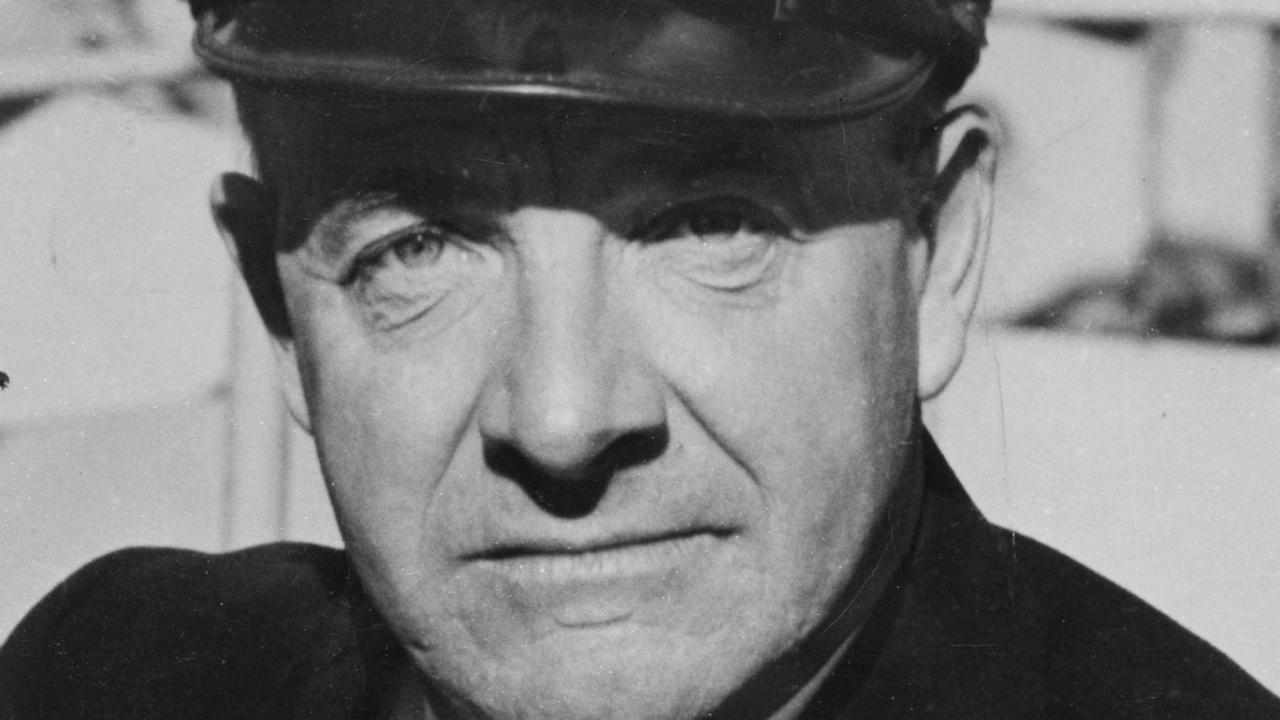George Bernard Shaw was accused of pinching Eliza Doolittle from Australian author Ethel Turner
BRITISH readers were entranced almost 120 years ago by Flip-Flop Evans. Although familiar as My Fair Lady, the story is not attributed to Australian author Ethel Turner, who introduced Eliza in a London magazine in December 1897.

Today in History
Don't miss out on the headlines from Today in History. Followed categories will be added to My News.
BRITISH readers were entranced almost 120 years ago by Flip-Flop Evans, adopted by a committee of little rich girls who took a ballot to choose a new name for their charity project. An informal vote decided the 12-year-old street urchin’s first lesson in becoming ladylike “Eliza Brown” was learning to say f-i-r-s-t, not “fust”.
Although familiar as My Fair Lady, playing in Sydney at the Opera House Joan Sutherland Theatre, the story is not attributed to British-born Australian author Ethel Turner, who introduced Eliza in The Child Of The Children in a London magazine in December 1897.
Nobel prize-winning Irish playwright George Bernard Shaw was later accused of pirating Turner’s story in his play Pygmalion, first performed in London in 1914 to become the genesis of My Fair Lady on stage and screen.
Author James Bennett told an English newspaper in December 1958 “it was perfectly obvious” Shaw had taken Turner’s story, which ended with Flip’s attempt to behave as a lady at a birthday party disintegrating when she filled her pockets with food for her siblings.
The accusation came months after Turner’s death and eight years after Shaw’s death at 94.

Shaw supporters argued the Pygmalion plot dated to ancient Roman poet Ovid, and was previously used by German author Friedrich Schiller and Frenchman Victor Hugo.
Shaw’s best-known work, which won him an Academy Award for best screenplay in 1938, likely reflected the outspoken socialist agitator and eugenicist’s unconventional love life.
Born into genteel poverty in Dublin in 1856, Shaw was the only son and third child of alcoholic civil servant George and wife Lucinda, daughter of a baronet. First educated by an uncle, at 15 Shaw left school to become an office boy.
His mother’s music teacher George Vandeleur Lee moved in with the Shaws in 1866, and in 1871 Lucinda followed Lee to London with her daughters.
The younger daughter had died when Shaw arrived in 1876 to toil over novels while living off money from his father and his mother’s modest income as a music teacher.
Frequenting libraries, the British Museum and public lectures, Shaw met middle-class intellectuals Sidney and Beatrice Webb, feminist Emmeline Pankhurst and novelist H.G. Wells.
Founding the democratic socialist Fabian Society in 1884, to counter Liberty and Property Defense League free-marketeers on Shaw’s 29th birthday, his mother’s singing pupil Jane Patterson, 46, a married woman, invited the sexually inexperienced Shaw to spend the night with her.
Their affair continued as Shaw edited Fabian Essays in Socialism, published in 1889 to sell more than 27,000 copies in two years. Shaw was also involved with Karl Marx’s daughter Eleanor, young Fabians Grace Gilchrist and Grace Black, and actor Florence Farr. His first play, tragicomedy Widowers’ Houses about London slum landlords, was performed in 1892 for only two nights.
In 1893, as Shaw wrote Mrs Warren’s Profession about organised prostitution, an angry scene after Patterson found Shaw with Farr ended his first romance.

As a theatre critic, in 1895 Shaw began writing to actor Ellen Terry.
Their fevered exchanges peaked in 1897, when Shaw wrote “keep on loving me … my Ellenest — love me hard, love me soft, and deep, and sweet, and for ever and ever.”
Shaw was also falling in love after the Webbs introduced him to socialist and feminist supporter, wealthy Irish heiress Charlotte Payne-Townshend. Shaw wrote to Terry that kissing Charlotte “in the evening among the trees was very pleasant, but she knows the value of her unencumbered independence”. Shaw rebuffed Charlotte’s first marriage proposal, but succumbed when she acted as his nurse after an injury. Terry, yet to meet Shaw, wrote to congratulate him on his marriage in 1898.
Although together until Charlotte’s death in 1943, it is suspected the childless union was unconsummated, but allowed Shaw to concentrate on writing. He won popular success in 1905 with Major Barbara, about an idealistic Salvation Army Major, when he initiated another correspondence romance with actor Beatrice “Mrs Patrick” Campbell. She inspired his Pygmalion character Eliza Doolittle and played the role written for her in the original West End production.
In 1919 the Victorian Socialist Party unsuccessfully invited Shaw to Australia. Asked to support an Australian theatre foundation in 1924, Shaw retorted, “What’s the good of a national theatre in Australia? Isn’t it populated by sheep?”
Dismissing Melbourne as “a stuffy old hole”, Shaw continued, “when I said Australia was overrun with sheep I was not thinking of the four-legged variety with wool on its back. It was the prevalence of the bipod bleater with all the wool in its head that made me feel hopeless as to my popularity to the antipodes.”
Still, Ellen Terry observed in 1908, “It doesn’t answer to take Bernard Shaw seriously. He is not a man of conviction”.
Originally published as George Bernard Shaw was accused of pinching Eliza Doolittle from Australian author Ethel Turner


